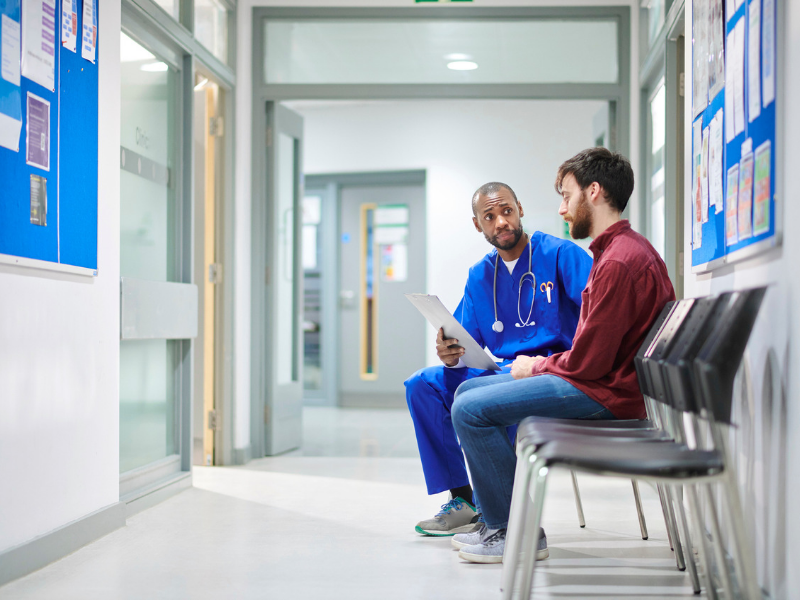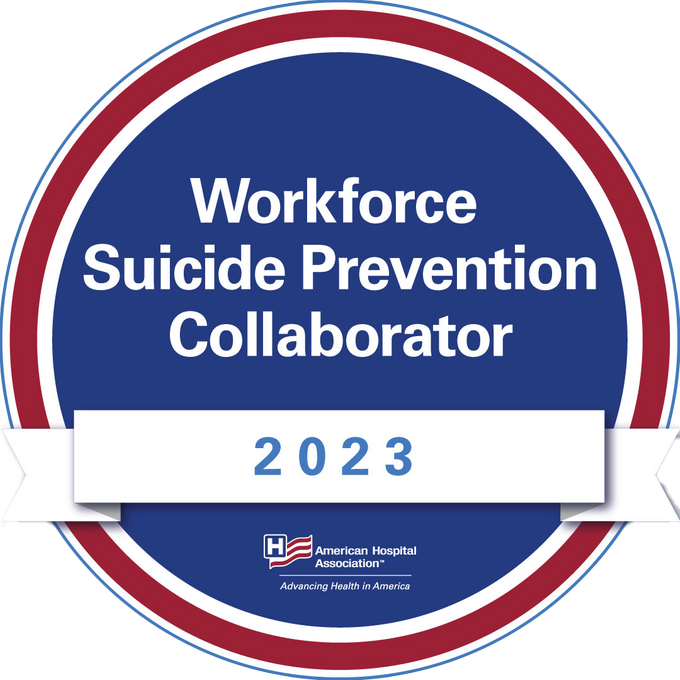In the emergency department, someone who’s ‘been there’
A partnership between Hoag and NAMI Orange County aims to improve emergency care for mental health patients
Hoag Memorial Hospital Presbyterian’s emergency department, in Newport Beach, California, saw very few patients who were in the midst of a mental health crisis when Christopher Childress first joined as a charge nurse 15 years ago.
But the volume of patients dealing with severe anxiety, depression, schizophrenia, suicidal ideation or other mental health issues 
“I wouldn’t describe an emergency room as a calm environment, and these patients would benefit from a calm environment,” says Childress, who became the Hoag emergency department’s nursing director last year.
Emergency departments have traditionally not been well-prepared to treat mental illnesses. And emergency mental health and substance using patients typically stay longer than medical patients, sometimes as long as several days. Patients must be stabilized (for example, if they have misused drugs or alcohol) and receive medical clearance. Sometimes, they have to wait for a psychiatric consult or transfer to a psychiatric bed.
Integrating mental health
Recognizing this lack of parity, Hoag and nine other hospitals across the nation are working with Well Being Trust and the Institute for Healthcare Improvement to find ways to fully integrate care for those with mental health and substance use issues into emergency departments and the community. Michaell Rose, director of the hospital’s community benefit efforts, says some of the questions Hoag’s emergency practitioners have been asking include:
“What can we do to help people get on the right track to recovery and offer them hope?”
“How can we connect them to resources while they’re waiting?”
One answer was to tweak a program that NAMI Orange County, a nonprofit organization that supports people with mental illness and their families, already had underway. The organization had previously placed volunteer mentors in other hospitals’ emergency waiting rooms to support family members. But they’d never had mentors in the “back” of the department, where patients spend long periods.
Last year, Hoag invited the program, called NAMI Connects, to place two part-time, paid mentors alongside the emergency department’s nurses, doctors and social workers. Using community benefit funds, the hospital enables NAMI to pay the mentors’ salaries. The two NAMI Connects mentors have lived experience with mental illness and specialized training to de-escalate tense or dangerous situations, calm patients down, empathetically connect with patients and their families, and provide social support.
They also can recommend services run by NAMI and other community organizations, including NAMI Orange County’s training programs that help families cope with a loved-one’s mental illness. About 20 percent of patients ask for follow-up phone calls from the mentors. On the calls, the mentors inquire how patients are doing and whether they are using prescribed medications or therapies, and walk them through how to get any additional help they need.
Mentor Aisha Khan uses her own history of anxiety and psychiatric hospitalization to put herself in patients’ shoes, build rapport and offer comfort.
“Stigma around mental health and mental illness is so prevalent … Even opening up and talking about their struggles is an intimate thing for patients to share,” she says. “I can say, ‘It’s OK. I’ve been there myself.’”
The mentors are able to bond with patients in a way that clinical staff just aren’t able to do, given their responsibilities in the emergency department, Childress says. For example, he’s witnessed mentors sitting and talking with patients for two hours straight.
“It’s just not feasible for an R.N. to have the time to do that,” he says.
Building momentum
As health systems across the nation grapple with how to better integrate mental health care into their emergency departments, innovative partnerships like Hoag’s and NAMI’s are an important step, says psychiatrist Arpan Waghray, M.D., Well Being Trust’s chief medical officer and system director for behavioral health at Swedish Health Services.
“An important component of improving mental health and stopping the alarming rise in deaths of despair from drug or alcohol misuse 
Childress says Hoag’s emergency department is taking other steps to make mental health patients feel cared-for and safe. His staff members have been trained in trauma-informed care, which takes patients’ past experiences into account when approaching their current behavior. And the hospital plans to bring psychiatric nurse practitioners into the emergency department within the next six months, to streamline mental health evaluations and appropriate treatment interventions.
For their part, NAMI’s mentors have begun looking for ways to also help other patients in the emergency department, many of whom may be struggling with mental health issues in addition to their presenting problems. The organization also is exploring expanding its program to the hospital’s acute medical floors.
That’s a testament to NAMI Connects’ success. “There isn’t a day where I feel that I haven’t helped somebody,” Khan says.






